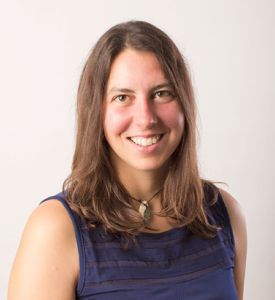Global Innovation Scholars unite to serve U.S. and Mexican businesses
(Ashland, Ore.) — Nine students and two faculty members from Southern Oregon University have been working for most of the past week with their Mexican counterparts at Universidad de Guanajuato on the annual Global Innovation Scholars program – a multicultural business development initiative to help organizations and businesses in both Guanajuato and Ashland while providing students with experience in international collaboration.
“Southern Oregon University’s 56-year relationship with the University of Guanajuato is a testament to the wonders that can come from a foundational bond built on love, admiration and mutual respect,” SOU President Rick Bailey said. “We have demonstrated that we can move mountains when we come together, united in purpose, to serve others and to help make our world a better place.”
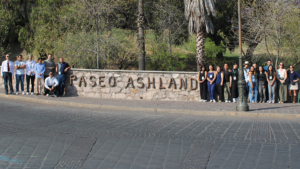 The 18 combined students from the two universities spent the past week researching and analyzing three Guanajuato businesses before concluding the visit by offering suggested development plans to the business owners. The students will reunite for a week in Ashland beginning on April 26, to provide the same services to three Rogue Valley businesses or organizations.
The 18 combined students from the two universities spent the past week researching and analyzing three Guanajuato businesses before concluding the visit by offering suggested development plans to the business owners. The students will reunite for a week in Ashland beginning on April 26, to provide the same services to three Rogue Valley businesses or organizations.
The 20-week Global Innovation Scholars program includes international, online coursework for participating students during each year’s winter and spring terms, in addition to the opportunity for immersive social and cultural experiences. The SOU and Guanajuato delegations met last week with various leaders of the Mexican university and with the region’s political leaders. Students typically spend a total of more than 250 hours on their projects, including the two site visits.
Global Innovation Scholars was developed by the two universities’ business schools as part of the “100,000 Strong in the Americas” program, sponsored by the U.S. State Department, the U.S. Embassies and the nonprofit organization Partners for the Americas.
“I believe that economic prosperity and peace are best built hand-in-hand across all borders,” Vincent Smith, dean of SOU’s School of Science and Business, said in his opening remarks for the gathering last week. “Our students are a symbol of hope.
“They are working together to build economic prosperity and community in both Mexico and the United States of America,” Smith said. “They symbolize not only the importance of international trade, but of international friendship. They are a reminder that real strength comes from building friendships, not walls. They remind us that we are better together.”
A key point of discussion during this year’s Global Innovation Scholars session in Mexico was the new U.S. tariffs and growing trade war. Guanajuato’s primary economy is the export of automobiles and automobile parts.
SOU and UG have initiated a variety of exchange and cooperative projects since they became sister universities in 1969. The link between the two schools has led more than 1,000 students, faculty members and others to participate in exchanges – and has resulted in more than 80 marriages that have tied people from Ashland and Guanajuato over three generations.
“The opportunity to do the Global Innovations Scholar program has made a tremendous difference in my skills in teamwork and my international worldview,” said Tiana Gilliland, president of the Associated Students of Southern Oregon University and one of the business students in this year’s program.
“I have had the opportunity to work closely with several other scholars to make a real difference in businesses that are striving to make a difference in their community,” Gilliland said.
Another student leader – Garima Sharma, a student member of the SOU Board of Trustees – said she has learned much about the power of connection and making a change in the world through her involvement with the Global Innovation Scholars program.
“I have learned that building relationships with students from both Southern Oregon University and Universidad de Guanajuato is a privilege which not many have,” Sharma said. “I have … gained a deeper understanding of our shared goals and how we can use our differences to create innovative solutions.”
The current Global Innovation Scholars project grew out of a previous partnership between the two schools – the Collaborative Online International Learning (COIL) program – which brought together classes of upper-division business students to work on the development of international business relationships.
-SOU-





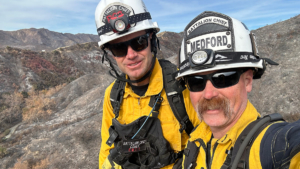
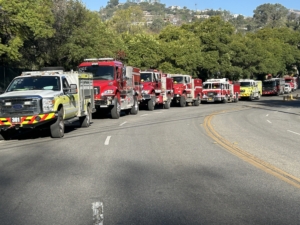 “The Group Dynamics material allowed me a deeper understanding of the root of the difficulties, which will lead to a change in how I will address similar situations moving forward,” Cohee said.
“The Group Dynamics material allowed me a deeper understanding of the root of the difficulties, which will lead to a change in how I will address similar situations moving forward,” Cohee said.
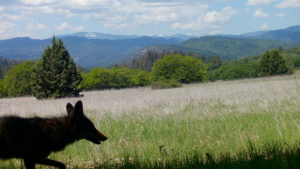 SOU associate professor Karen Mager and her students have used camera traps to study wildlife use of I-5 for the past three years to better understand regional needs for wildlife crossings. Their data was a key component of the feasibility study that identified Mariposa Preserve as the priority site for an overpass. They provided species use data for the state and federal funding applications. and their monitoring efforts are expected to continue during and after construction of the crossing.
SOU associate professor Karen Mager and her students have used camera traps to study wildlife use of I-5 for the past three years to better understand regional needs for wildlife crossings. Their data was a key component of the feasibility study that identified Mariposa Preserve as the priority site for an overpass. They provided species use data for the state and federal funding applications. and their monitoring efforts are expected to continue during and after construction of the crossing.